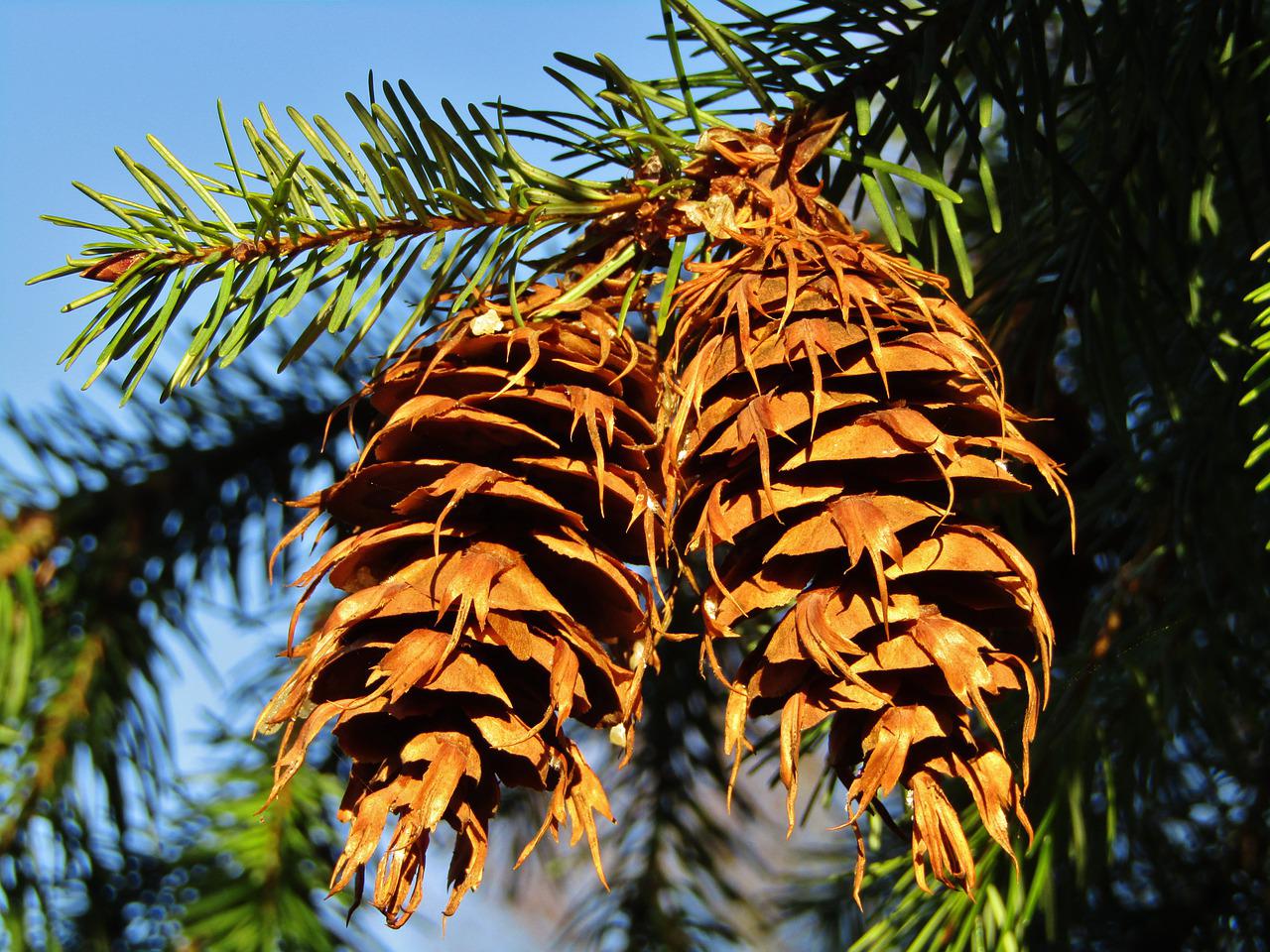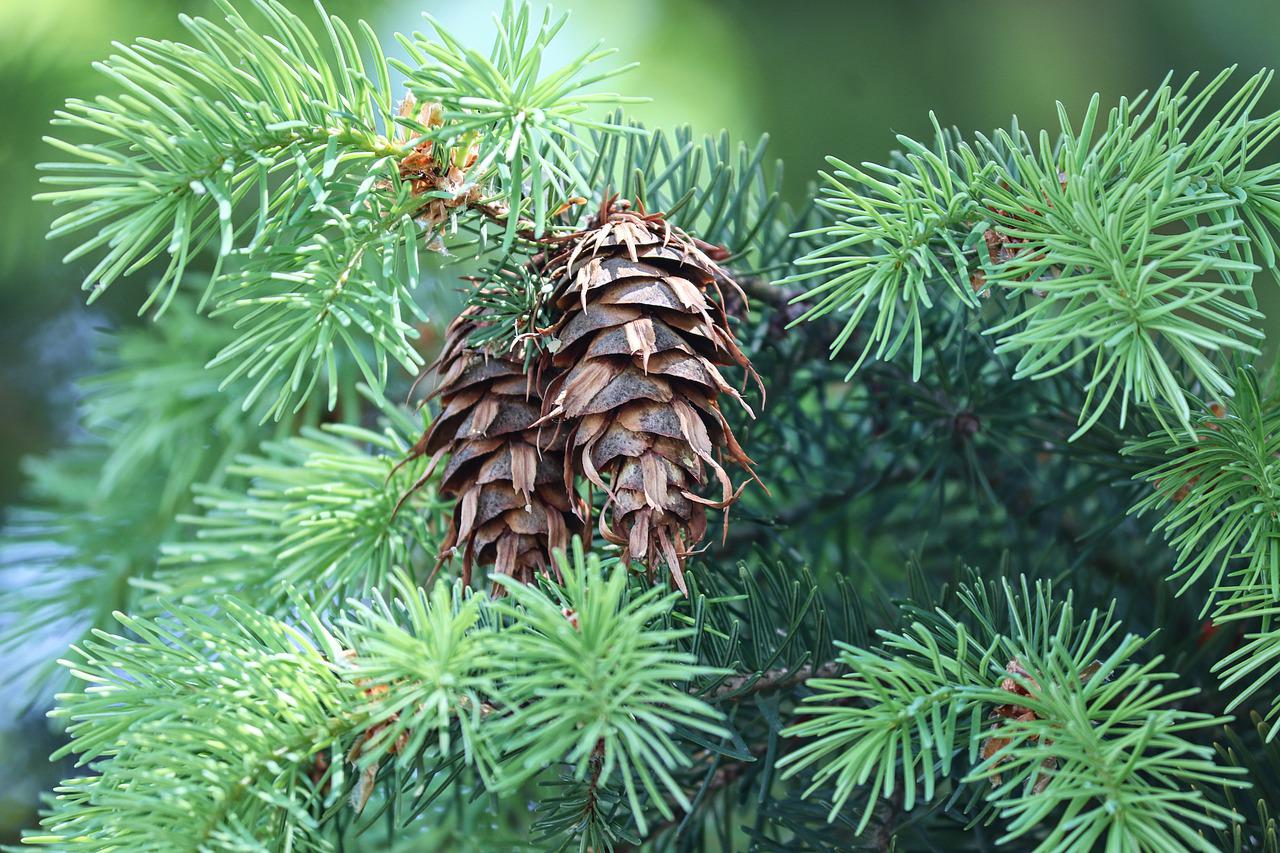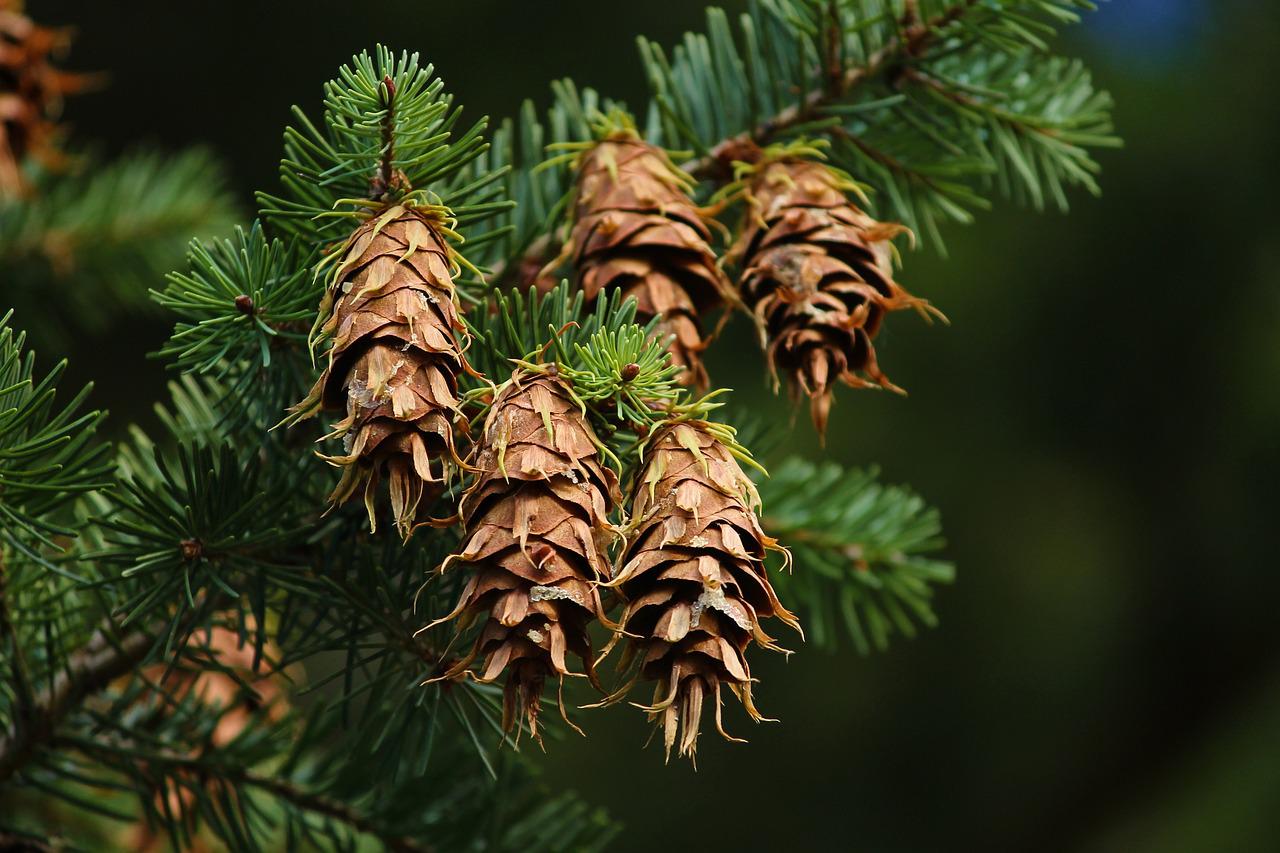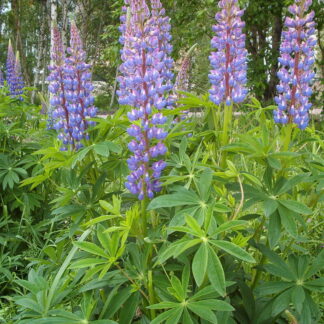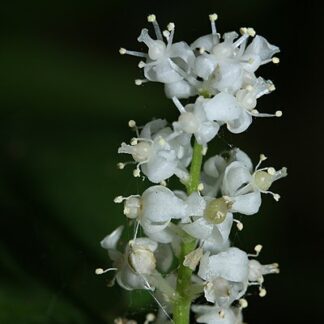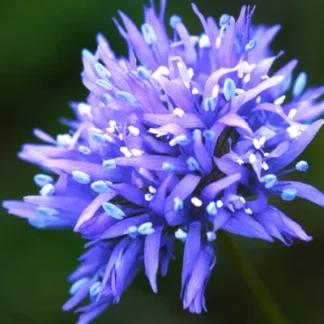Description
Sold in bundles of 10.
At a Glance: Large coniferous tree with thick, fluted bark.
Height: Up to 300 feet (90 meters).
Stems: Very thick bark with deep cracks when mature, helping the tree withstand forest fires.
Leaves: Needles 2-3 cm (0.8-1 in) long with pointed tips, 1 groove on upper surface, 2 white rows of stomata on lower surface, spirally arranged, flat scar on twig upon falling; buds sharp-pointed; color: yellowish green.
Flowers: Pollen cones reddish-brown, small.
Flowering Period: none.
Fruits: Young seed cones hanging, oval, 5-10 cm (2-4 in) long, green when young, turning reddish-brown to grey; scales papery; bracts prominently 3-forked, extend beyond scales.
Importance: The importance of Douglas-Fir to the region cannot be understated. It is a major component of forests throughout North America, and one of the world’s most valuable timber species.
Helpful Tips: Browsing damage caused by deer, elk, and rodents can result in significant damage to young seedlings and saplings, and may require appropriate protection. Plant 6 feet apart when establishing and expect some mortality. Remember, all plants need watering during the dry season the first couple years, until they are established. Douglas-fir is drought tolerant, once established and it grows well in full sun.
Ethnobotany: The wood and bark was used as fuel by most coastal groups. The wood was used to make spear handles, harpoon shafts, spoons, dip-net poles, harpoon barbs, fire tongs, salmon weirs, caskets and halibut and cod hooks. The pitch was used to sealjoints on implements such as harpoon heads, gaffs and fishhooks, and for caulking canoes and water vessels. The Nuxalk, Quinault and others used the pitchy heartwood for torches. Wood is used in many types of construction. Commonly used as a Christmas tree.
Pitch was used to make a medicinal salve for wounds and irritations. The bark of the young root is boiled by the Swinomish and babies are washed in it. The bud tips are picked by them and chewed for sore throats and mouth sores. The Comox prepared dogfish by stuffing it with rotten, powdered Douglas fir and placing it in a pit lined with the same material.
| Sun/Shade Tolerance | Hydrology | Elevation Range |
|
full sun > 80%
mostly sunny 60%-80%
partial sun and shade 40%- 60%
mostly shady 60%-80%
full shade > 80%
|
wet
moist
dry
|
low elevation
mid elevation
sub-alpine
high elevation
|
| Soil Preferences | ||
|
sandy soils
gravelly soils
clay soils
muddy soils
peaty soils
|
well drained soils
shallow soils
deep soils
acidic soils
basic soils
|
humic soils
nutrient rich soils
nutrient poor soils
mineral soils
organic soils
|
| Wildlife Value | |
|
Berries
Seeds
Nectar for hummingbirds
Nectar for butterflies
Host for insect larvae
Thickets and shelter
Thorny or protective cover
|
Birds: Birds that eat the seeds include grouse, crosbills, siskins, and many others. Chickadees, nuthatches, brown creepers, and woodpeckers find insects in the trunk, branches, and twigs. Cavity-nesting birds and other wildlife, including flying squirrels, nest and roost in cavities in mature trees. Insects: Foliage is eaten by pine white butterfly larvae, silver-spotted tiger moth larvae, and numerous other moths. Mammals: Squirrels and chipmunks eat the seeds. The foliage and twigs are browsed by beavers, porcupines, deer, and elk. |
References:
Pojar, Jim, and Andy MacKinnon. Plants of the Pacific Northwest Coast: Washington, Oregon, British Columbia & Alaska. Revised ed. Redmond, Wash.: B.C. Ministry of Forests and Lone Pine Pub., 2004. Print.
“Sound Native Plants.” Sound Native Plants. Web. 31 Oct. 2014. <www.soundnativeplants.com>.

